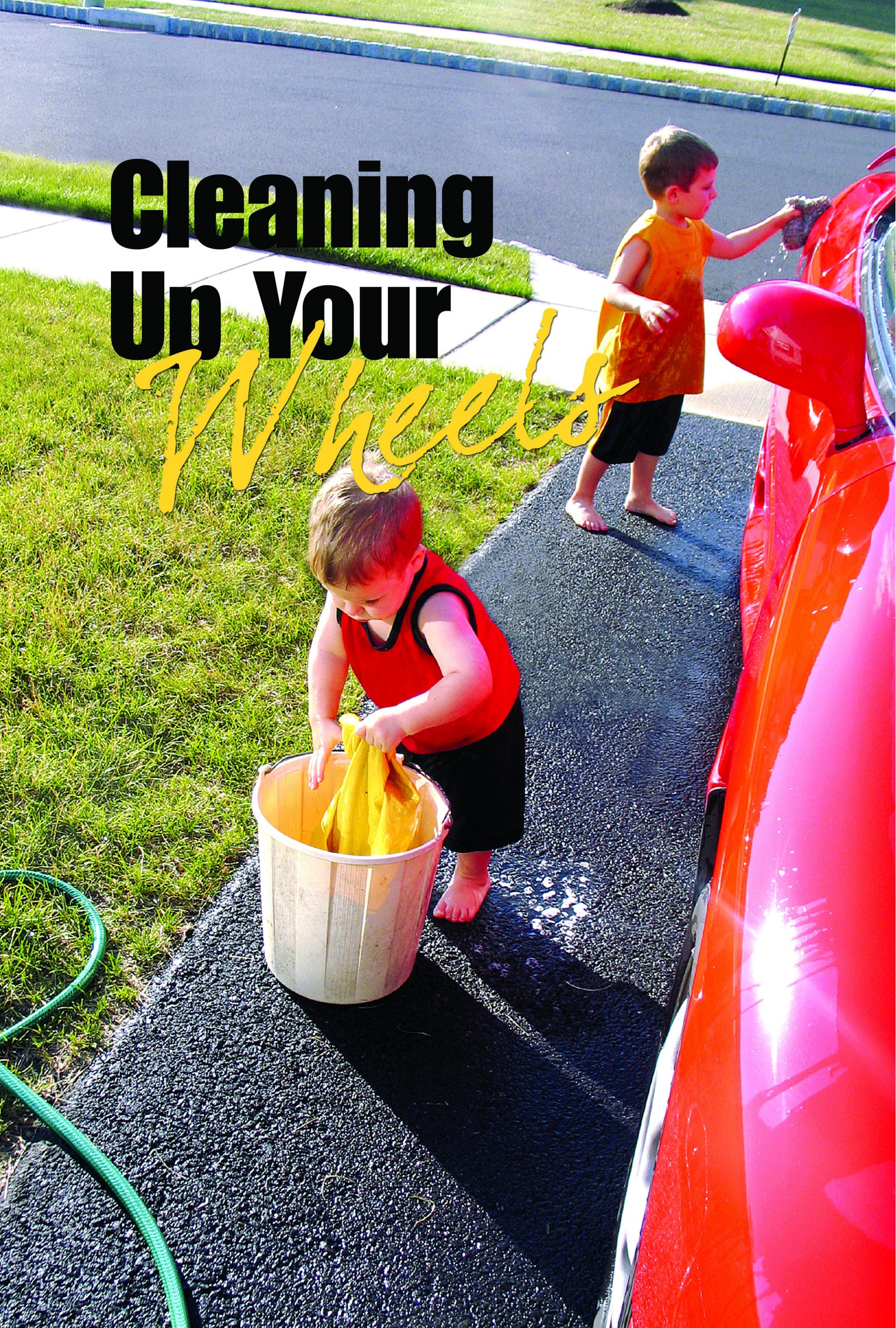By Jim Gorzelany, CTW FEATURES
A bucket, hose, and towel are all the tools you need to keep your car or truck looking good.
Proper vehicle maintenance goes beyond taking care of your car or truck’s mechanical items. Your vehicle’s interior and exterior likewise need regular attention to help preserve a like-new look, add longevity inside and out, and boost its resale value at trade-in time.
Looking good doesn’t necessarily come cheap, however. A professional detailing job can cost well over $100, and even a simple automated car wash can cost $10 or more, and some can mar your vehicle’s finish in the bargain.
Fortunately, cost-conscious consumers armed with a bucket and garden hose can do the job themselves for a fraction of the cost. Working our way from the inside out, here’s a look at the best ways to keep your car looking new:
INSIDE:
Door-to-door carpeting.
Vacuum and spot-shampoo your vehicle’s carpeting regularly (household rug-cleaning spray-foam usually will do the trick), especially after extended bouts of bad weather, to avoid permanent stains from ground-in mud and road salt.
Seat treatments.
For cloth seats, vacuum regularly using an upholstery attachment, and shampoo when necessary (using a spray-foam upholstery-cleaning product). Use a spray-on fabric-protector to repel dirt and stains. Treat vinyl upholstery, as well as the dashboard and trim items, with a spray-on product specifically designed for plastic and rubber surfaces. In addition to restoring a like-new gloss, this will keep such surfaces from drying, fading, or cracking. If you have leather seats, apply a leather-restoring cream using a clean terrycloth towel to help add longevity to their luster.
Working in windows & mirrors.
Common household window cleaners work well for most automotive glass surfaces, but a homemade mixture of white vinegar and water is claimed to be best for tinted windows.
OUTSIDE:
Quick-fix chips, nicks.
To prevent rusting, fix small scratches and chips as soon as possible. Most new-car dealers sell small bottles of touch-up paint to match recent models’ finishes for a few dollars. Clean the damaged area and apply the paint sparingly with the brush provided. If the chip or scratch has already begun to rust, sand the area lightly and apply a thin coat of primer to any bare metal before painting. Carefully buff-out surface rust from chrome and other metal surfaces with a household scouring pad and water.
Location, location, location.
Always wash and wax your car in a shaded area. This will both prevent water spotting and keep the wax from drying too quickly and baking onto the car’s surface (sun-hardened wax is especially difficult to remove).
Ragtime.
Be sure to use a soft rag – either terrycloth or flannel – when washing or waxing your vehicle. Nylon or synthetic towels or paper products are not as absorbent and may scratch the finish.
Take a top-to-bottom approach.
Work your way from the top down, using an acid-free non-abrasive cleaner to wash the vehicle’s exterior; this is available at auto-parts stores and most discount stores. Avoid using household cleansers or detergents that can remove the protective coating from the car’s surface. Use a wheel-and-tire cleaning treatment and/or scrub wheels and tires using a stiff bristle brush to remove dirt, grease and disc-brake powder. Use a treatment made for removing insects and road tar to clean the front grille (take extra care if your grille is made of plastic), behind the wheels and other problem areas.
The rinse cycle.
Spraying from top to bottom, rinse the vehicle by letting an adequate supply of water stream down the finish. Be sure to spray thoroughly underneath the car and inside the wheel wells to loosen road grime; this is especially important during the winter months in snow-belt areas, when corrosive road salt can accumulate. Allow the car’s surface to dry, raising the hood and trunk to allow the water to run completely from the edges. Especially if you won’t be waxing the car that day, remove water beads using an absorbent chamois – again, available where auto supplies are sold.
Waxing poetically.
Apply a good coat of wax to the car’s sheet metal, but be sure to choose a wax that’s “right” for your vehicle. For example, if you have an older car, you may want to choose a wax that has a light abrasive to remove minor scratches. A newer car may require a milder polish made for so-called clear-coat paint finishes. Typically, car wax or cleaner/wax is applied with a clean, damp cellulose sponge with overlapping, circular strokes to a cool finish (to avoid streaks). Once the wax has dried to a haze, wipe it off with a soft, clean cloth.
Lingering details.
Treat tires and exterior rubber or plastic trim with the aforementioned plastic/rubber protectant. Use a chrome treatment to polish exterior brightwork and aluminum wheels; a household window-cleaner can suffice, but apply it with a rag, to avoid spraying an ammonia-based product onto the freshly waxed paint.
© CTW Features


